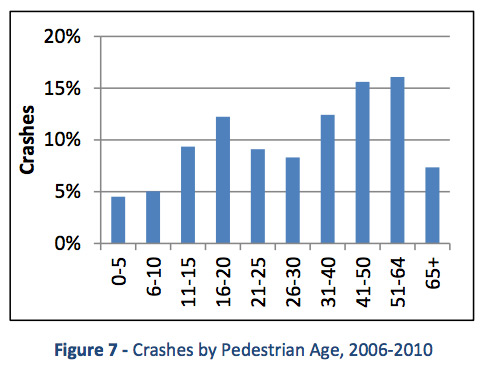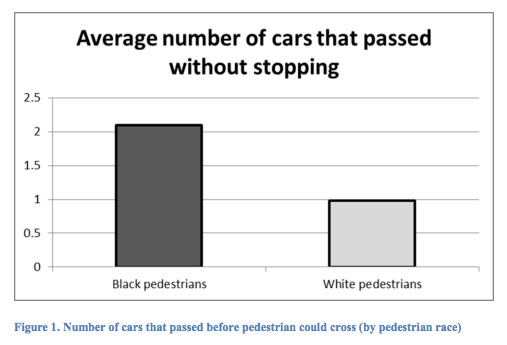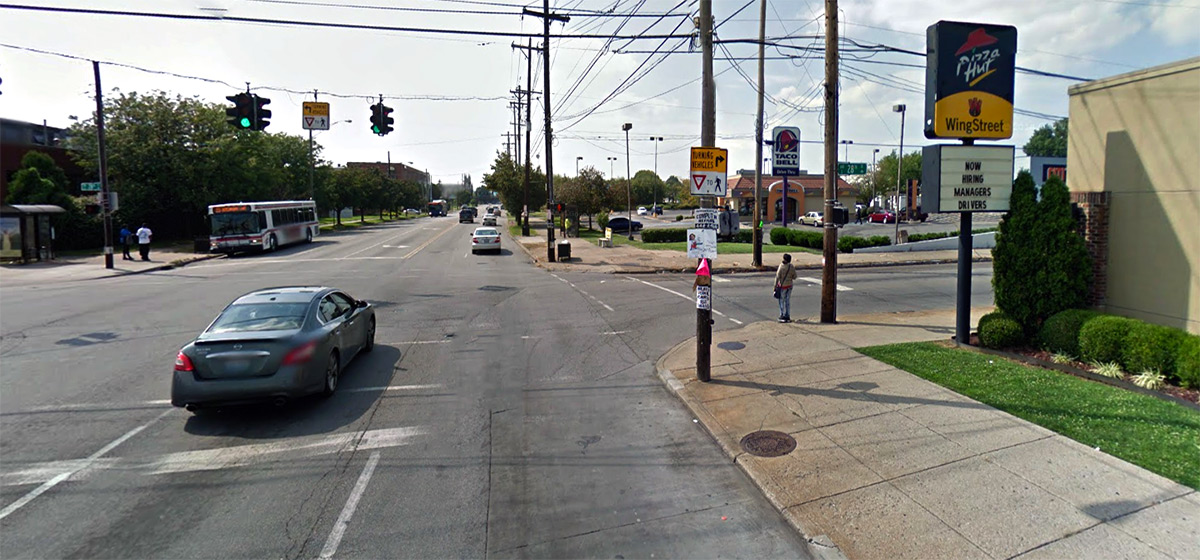[Editor’s Note: This is one piece in a multiple-part series about street safety in Louisville as the city continues to roll out its three-year pedestrian safety campaign, Look Alive Louisville. View the entire series here.]
As Louisville’s Look Alive pedestrian safety campaign continues, it’s worth looking around to see what others have learned about street safety. We’re fortunate that we can learn from other early adopters of pedestrian safety and research and analysis that has already been done. Here’s a roundup of five studies that show not all pedestrians face equal risk when navigating city streets.
Senior citizens at greater risk
In August 2014, a report from the Tri-State Transportation Campaign (TSTC) found that older pedestrians in New York, New Jersey, and Connecticut were at higher risk of death. “Despite older pedestrians’ increased risk of being killed while walking, simple roadway improvements—clearly marked crosswalks, longer crossing signals and wider pedestrian islands—make walking safer and easier for older residents and younger residents alike,” Veronica Vanterpool, TSTC executive director, said in a written statement.

Louisville’s own study of local crash data, “Understanding Pedestrian Crashes in Louisville, KY, 2006–2010,” found that pedestrians aged 41–64 were the most common crash victims, representing 31.7 percent of collisions but only 16.1 percent of the population. The report charts ages, but doesn’t break down the numbers for people over the age of 65. A separate presentation on Louisville crash data noted that “seniors comprise 12% of the population whereas they make up over 17% of all traffic fatalities while 25-34 year olds make up 14% of the population, but 18% of the total traffic fatalities.”
It might seem obvious that we should consider the walking skills of all pedestrians—from children to the elderly—in creating a safer and more livable Louisville. We previously interviewed Gil Penalosa, former Commissioner of Parks in Bogotá, Columbia, and executive director of 8-80 Cities in Ontario, Canada, on how to make livable streets for everyone.
Low-income neighborhoods at higher risk

Another study from last August by Governing also shows people in low-income areas are more likely to be killed while walking. Streetsblog reported, “A review of pedestrian deaths from 2008 to 2012 revealed that the fatality rate is twice as high in America’s poorest neighborhoods as in higher-income neighborhoods.”
An interactive map released as part of the study shows that in Louisville between 2008 and 2012, pedestrian deaths per capita were more than twice as high in neighborhoods with more than 25 percent of people in poverty compared to places with less than 15 percent of people in poverty.
Another map from Governing pinpointing pedestrian deaths in the same period shows many of them occurred along suburban arterials that are set up more like highways, often without sidewalks or crosswalks present.
Racial bias in pedestrian risk

In May 2014, Streetsblog also reported on a study from Portland State University and the University of Arizona that “indicates racial biases play a role in how pedestrians are treated on the roadway…They found that the black pedestrians were passed by twice as many cars and waited a third longer than white subjects to cross the road.”
That report reinforces earlier studies by the Centers for Disease Control (CDC) that show inequality in street safety and pedestrian death. According to Streetsblog:
Pedestrian fatalities also took a high toll on Native American, Hispanic, and black populations. Native American men were four times more likely than white men to be killed while walking, and the fatality rates for black and Hispanic men are about twice that of white men. The disparity was less pronounced for women, but even so, Native American women are roughly twice as likely as white women to be the victim of a fatal pedestrian crash, while Hispanic and black women are 50 percent more likely.
The discrepancy may be partly explained by the fact that more people of color tend to live in urban areas, where residents walk more and are more exposed to traffic violence as pedestrians. (The lower level of driving in cities means that urban residents are less exposed to traffic violence overall.) Another factor is that black and Hispanic families are much less likely to own a car than white families, so these populations also walk more than the public overall.

Speeding motorists yield less
This April, State Smart Transportation Initiative (via Planetizen) reported on another study from the Transportation Research Board that found that as motorist speed increases, the chance of the driver yielding to pedestrians in the crosswalk decreases. According to SSTI, “The study, conducted in Boston, reveals that drivers are nearly four times more likely to yield for pedestrians at travel speeds around 20 miles per hour than at 40 mph.” High speeds also contribute to “narrower field of vision, longer stopping distances, and increased risk of injury during a collision,” SSTI reported.
“Now there’s hopefully increasing emphasis on also reducing speeds, whether it is through skinny lanes, signal coordination at 25 mph, or actually putting traffic calming devices on arterial roadways,” Tom Bertulis, an engineer in the Boston area and the study’s lead author, told SSTI.
There are plenty of other studies out there that offer insights into the challenges of fighting traffic violence on our streets. Hopefully Louisville can utilize this pool of information to make the Look Alive campaign even more effective. It’s heartening as well the Mayor Greg Fischer has joined the USDOT’s Mayors’ Challenge for Safer People, Safer Streets, which, among other things, makes a vast pool of data available for cities trying to increase pedestrian and cyclist safety.
“We have a lot of material and resources and research,” Ryan Daniels, press secretary of USDOT’s Office of Safety, Energy, and Environment, told me for an article in The Architect’s Newspaper. “We already know a lot about how to solve this safety problem. We want to see more of those resources in use.”
Louisville is in the midst of a three-year pedestrian-safety campaign under the banner of Look Alive Louisville. Learn about that effort in the first part in our ongoing series on street safety in Louisville.
[Top image: The intersection of Broadway and 28th Street. Courtesy Google.]


